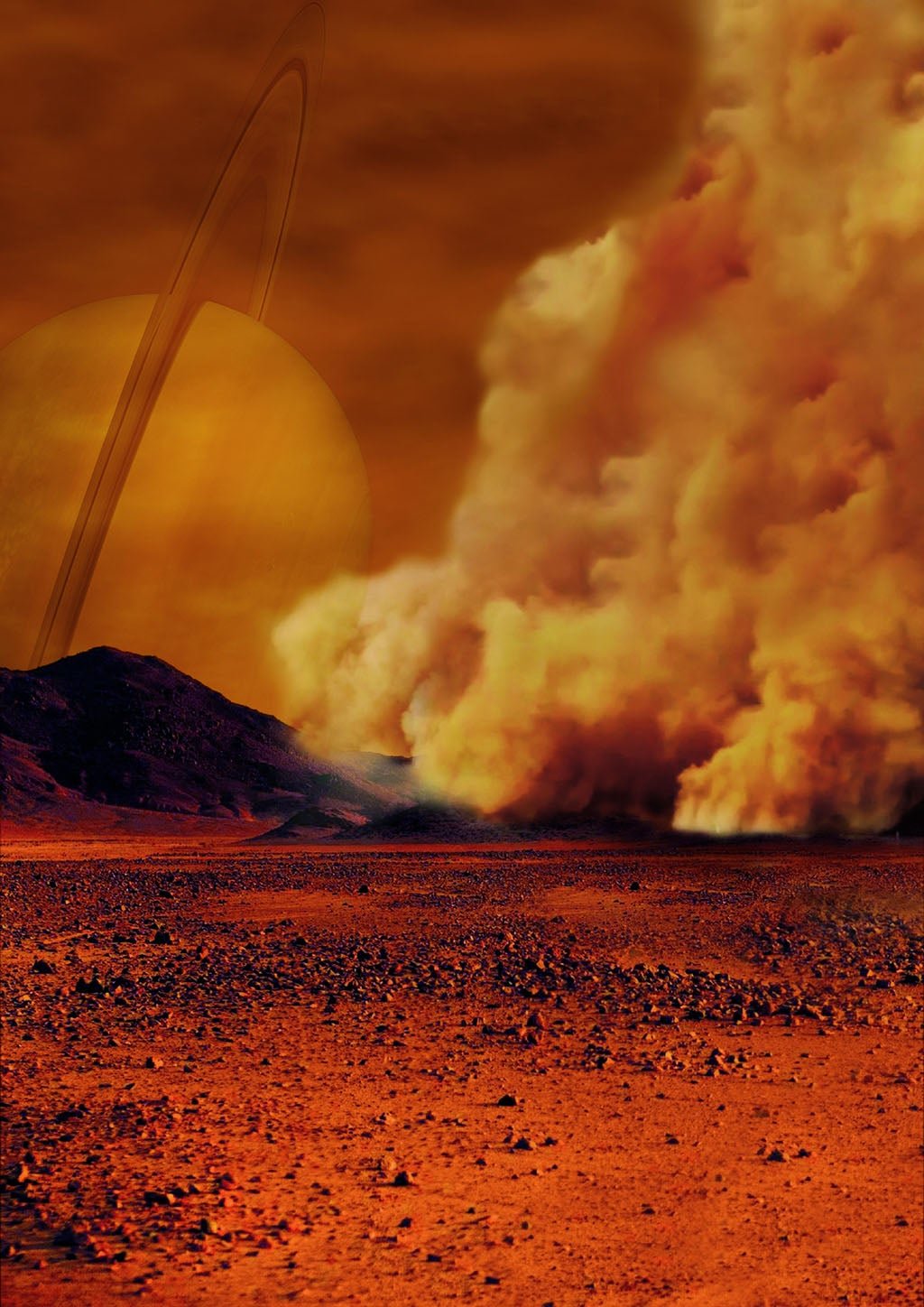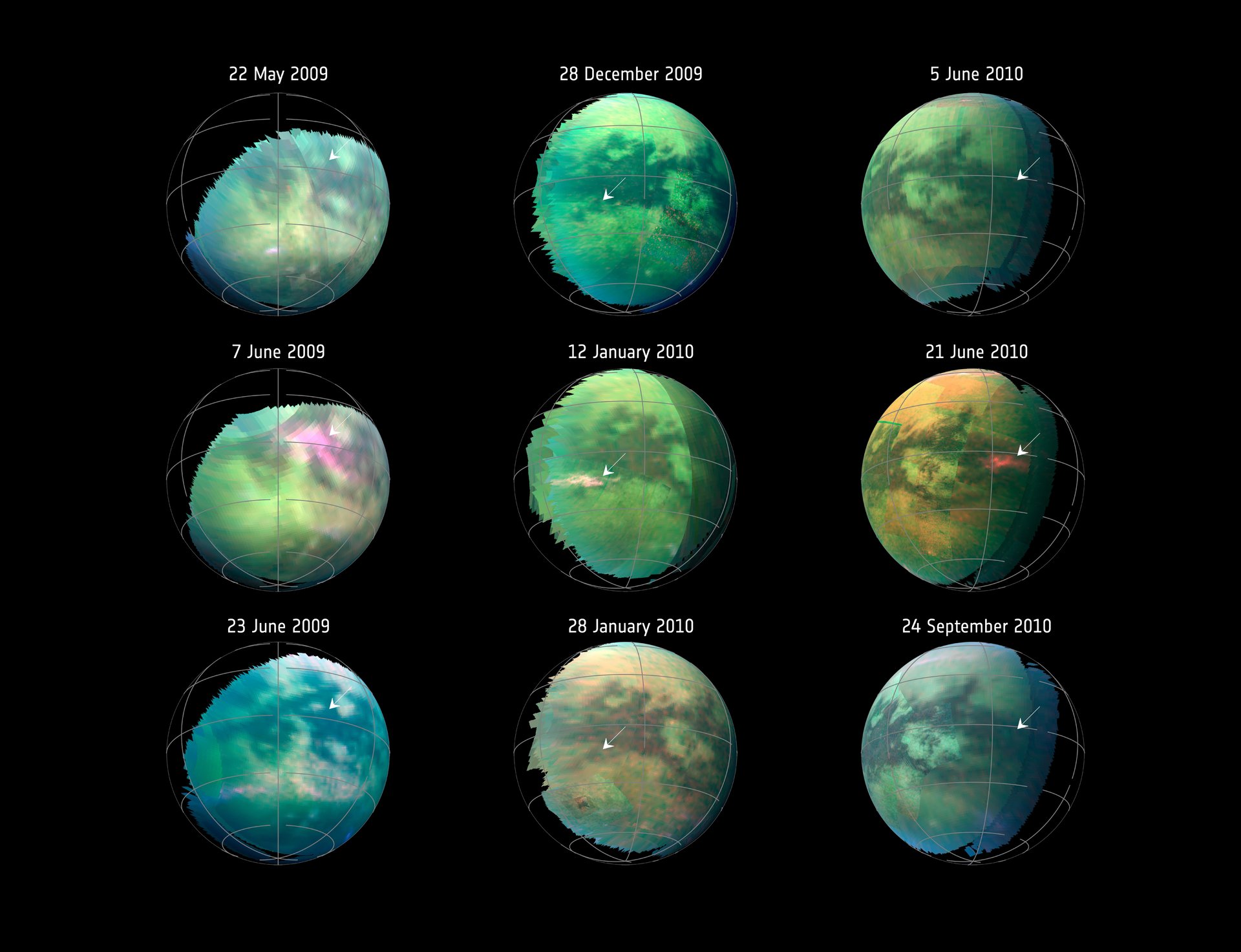Images from Cassini show evidence of dust storms on Saturn’s largest moon
Until now, dust storms have only been observed on two celestial bodies: Earth and Mars. But after looking at images produced using data from NASA’s Cassini space probe, which crashed into Saturn in 2017 after 13 years of service, astronomers believe they’ve seen evidence of dust storms on Titan, the largest of Saturn’s more than 60 moons.


Until now, dust storms have only been observed on two celestial bodies: Earth and Mars. But after looking at images produced using data from NASA’s Cassini space probe, which crashed into Saturn in 2017 after 13 years of service, astronomers believe they’ve seen evidence of dust storms on Titan, the largest of Saturn’s more than 60 moons.
Originally thought to be a storm of methane clouds—Titan has flowing bodies of liquid methane that evaporate and rain back down periodically—the clouds observed were far too low in the atmosphere to be clouds. A story on the Jet Propulsion Lab’s website elaborates on how astronomer Sebastien Rodriguez and his team came to this conclusion:
Modeling showed that the features must be atmospheric but still close to the surface — most likely forming a very thin layer of tiny solid organic particles. Since they were located right over the dune fields around Titan’s equator, the only remaining explanation was that the spots were actually clouds of dust raised from the dunes.
The dust storm, pictured below in an array of satellite images, appears as pink blobs over the surface of Titan, which is rendered a blueish green in satellite imagery.
